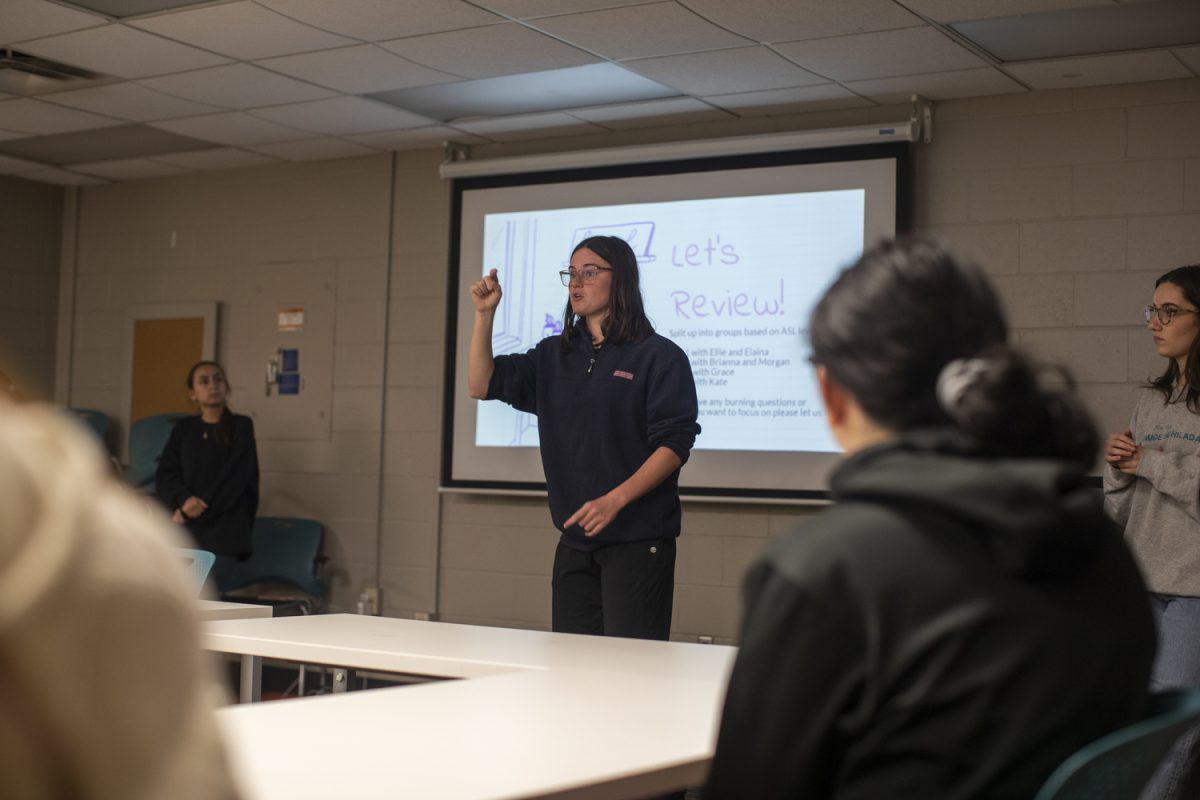Students shouldn’t sweat the dreaded clicker question in lectures.
A new University of Iowa study shows using clickers in class helps students both pay attention and attend the class.
The study was undertaken by William Hedgcock, a University of Iowa assistant professor of marketing, and St. Ambrose Assistant Professor Robert Rouwenhorst, a former UI lecturer.
“Clickers can be an effective tool to improve feedback,” Hedgcock said. “This improved feedback can increase class preparation, enjoyment of the class, help students evaluate their own comprehension of course materials, and improve test scores.”
The study was conducted over two semesters with two test groups of 80 and 81 students.
The study involved quizzes during class, attendance, and student surveys to analyze the students’ experience using the clickers in class.
“We wanted to make sure clickers were worthwhile before making larger investments,” Hedgcock said.
Hedgcock said the participating students received free clickers from an instructional improvement grant from the UI.
Rouwenhorst said he took part in the study because he was teaching classes of around 150 students and was curious about the impact of clickers in larger classroom settings.
“The key takeaway for me is there are many ways to make sure students are engaged and learning,” he said. “Asking questions and relying on raising of hands leads to a very skewed pool of respondents, often the same students.”
UI Associate Professor of sociology Jennifer Glanville, who uses clickers in her large lecture courses, said she inserts questions throughout lectures to reduce and break up the time students are just sitting and listening.
“The first and more important reason is that I thought it would allow for more student interaction and engagement,” Glanville said.
She also said it’s a great way to take attendance for big classes. She said she would not want to go back to not using them in large lectures.
“By answering clicker questions, students need to get more actively involved in the material,” Glanville said. “Clickers also provide an opportunity for students to learn from each other when the instructor gives them difficult questions or problems that they can work on with their neighbors.”
“I think it helps because whenever they ask a question, and when I usually get the question wrong, that’s when I know I’m not paying enough attention,” Onishi said. “Otherwise, I probably wouldn’t really pay any attention.”
Onishi said clickers can be somewhat awkward for smaller classes, but that using them makes a lot of sense for big lectures.
Dan Sanchez, a pre-med senior at the UI, said he attends his class that uses a clicker significantly more frequently than the ones that don’t.
“I think the clickers, when made for a grade, encourage kids to come to class more and force them to be somewhat more engaged,” Sanchez said.
Abby Freking, a sophomore nursing student at the UI, said she uses a clicker for quizzes at the beginning of her anatomy lectures. Because of that, she said she definitely attends class more frequently.
“[The quizzes] are timed so it gets difficult,” Freking said. “On an exam, you can look at it for as long as you want, but it’s a good challenge, too.”






